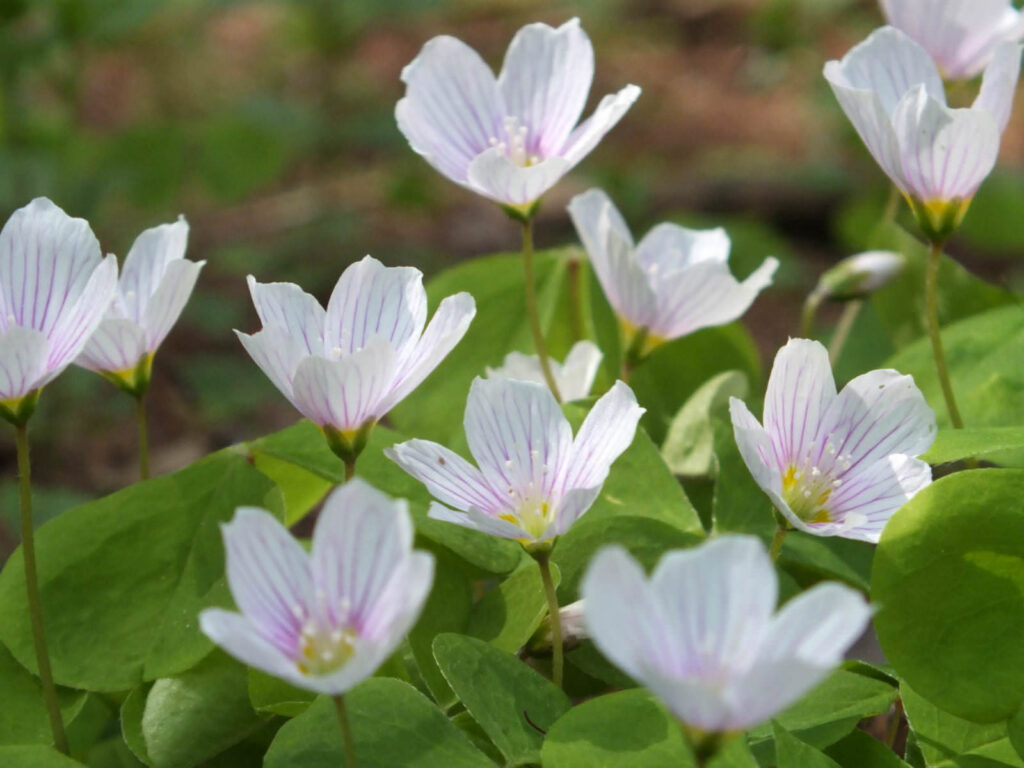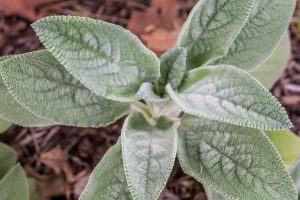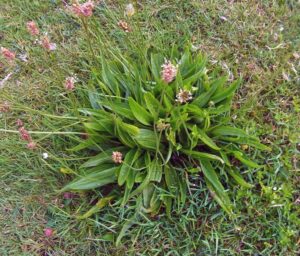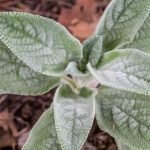
Approx. Reading time: About 25 Minutes

Introduction
A Botanical Adventure
Embark on a botanical adventure as we delve into the realm of Wood Sorrel, a delightful plant that not only graces the forest floor with its verdant presence but also offers a myriad of culinary, medicinal, and magical possibilities. From identification to foraging techniques, let us explore the enchanting world of Wood Sorrel.

What is Wood Sorrel?
Wood Sorrel Basics: Wood Sorrel, scientifically known as Oxalis, is a genus of flowering plants that encompasses various species, each with its own unique characteristics. These plants are renowned for their distinctive trifoliate leaves, resembling clover, and dainty, five-petaled flowers that add a touch of elegance to wooded areas and meadows.
Variants of Wood Sorrel
Common Variants: While several species fall under the umbrella of Wood Sorrel, two are commonly encountered:
Oxalis acetosella (Common Wood Sorrel): A Woodland Charmer
In the enchanting realm of Wood Sorrel, Oxalis acetosella, commonly known as Common Wood Sorrel, emerges as a woodland charmer celebrated for its distinctive features and widespread presence. Let us delve into the unique characteristics that distinguish Common Wood Sorrel in the verdant tapestry of the forest floor.

In the enchanting realm of Wood Sorrel, Oxalis acetosella, commonly known as Common Wood Sorrel, emerges as a woodland charmer celebrated for its distinctive features and widespread presence. Let us delve into the unique characteristics that distinguish Common Wood Sorrel in the verdant tapestry of the forest floor.
Recognizing Common Wood Sorrel
Leaflet Love: Common Wood Sorrel is characterized by its trifoliate leaves, each resembling a charming heart or kidney shape. The heart-shaped leaflets give this variety an endearing quality, making it easily distinguishable from its woodland companions.
Delicate Blooms: Adding to its allure are the delicate white or pale pink flowers that grace Common Wood Sorrel. These dainty blooms, borne on slender stems, create a whimsical display, adding a touch of elegance to the woodland landscape.
Widespread Presence
Woodland Wanderer: Common Wood Sorrel is not confined to secretive corners of the forest; rather, it is a widespread and well-loved variety that can be found in a variety of wooded habitats. From shaded woodlands to sun-dappled clearings, this woodland wanderer thrives in diverse environments, creating carpets of greenery beneath the towering canopy.
Seasonal Symphony: During its active growing season, which typically spans late winter to early summer, Common Wood Sorrel transforms the forest floor into a seasonal symphony of heart-shaped leaves and delicate blossoms. Its presence becomes a testament to the cyclical rhythms of nature, marking the arrival of spring with botanical grace.
Why it is Well-Loved.
Charm and Adaptability: Common Wood Sorrel’s charm lies not only in its visual appeal but also in its adaptability. The heart-shaped leaves and delicate blooms create a sense of wonder, inviting admirers to appreciate the simple yet enchanting beauty that nature provides.
Culinary and Medicinal Potential: Beyond its aesthetic qualities, Common Wood Sorrel holds culinary and medicinal potential. Its leaves, with their tangy flavor, can be a delightful addition to salads or infusions. Additionally, some herbal traditions attribute mild anti-inflammatory properties to Wood Sorrel, contributing to its historical use in herbal remedies.
In the dappled sunlight of the woodland, Common Wood Sorrel stands as a beloved companion, weaving its magic into the fabric of the natural world. As you encounter this woodland charmer in your foraging adventures, take a moment to appreciate its heart-shaped leaves and delicate blooms, and perhaps let its presence inspire a deeper connection with the enchanting mysteries of the forest.
Oxalis stricta (Yellow Wood Sorrel): A Sunlit Symphony

In the botanical orchestra of Wood Sorrel, Oxalis stricta, commonly referred to as Yellow Wood Sorrel, takes center stage with its vibrant hues and distinctive clover-like leaves. Let us explore the radiant qualities that define Yellow Wood Sorrel and make it a prevalent and captivating variant in various regions.
Characteristics of Yellow Wood Sorrel
Sunny Petals: One of the defining features of Yellow Wood Sorrel is its bright yellow flowers, which stand out like rays of sunshine against the green backdrop of the forest floor. These cheery blossoms, reminiscent of miniature suns, contribute to the visual appeal that makes Yellow Wood Sorrel a standout in woodland landscapes.
Clover-Like Leaves: The leaves of Yellow Wood Sorrel bear a striking resemblance to clover, showcasing three leaflets arranged in a trifoliate pattern. This clover-like foliage adds to the plant’s charm and aids in its identification, especially when it mingles with other woodland flora.
Widespread Presence
Versatile Habitats: Yellow Wood Sorrel showcases its adaptability by thriving in a variety of habitats. From open meadows to the edges of woodlands, this variant asserts its presence with a sunny disposition. Its ability to flourish in both sunlit and partially shaded areas contributes to its prevalence in diverse regions.
Global Resilience: Yellow Wood Sorrel is not bound by geographical constraints; rather, it is a resilient species that can be found in various parts of the world. Its global presence adds to its allure, making it a familiar and cherished sight for those who appreciate the simple beauty of woodland flora.
Why it Stands Out
Colorful Elegance: The bright yellow blossoms of Yellow Wood Sorrel bring a touch of colorful elegance to natural settings. As the flowers unfurl, they create a sunlit symphony, transforming the landscape into a vibrant tapestry of green and gold.
Culinary and Folk Uses: Beyond its aesthetic appeal, Yellow Wood Sorrel shares culinary potential with its close botanical relatives. Its leaves, like those of Common Wood Sorrel, possess a tangy flavor that adds zest to salads and other culinary creations. Additionally, some folk traditions attribute mild medicinal properties to Yellow Wood Sorrel, contributing to its historical use in herbal practices.
In the dance of light and shadow beneath the forest canopy, Yellow Wood Sorrel’s radiant blooms and clover-like leaves stand as a testament to the resilience and beauty of woodland flora. As you encounter this sunlit variant in your explorations, take a moment to appreciate its vibrant hues and the role it plays in the intricate tapestry of the natural world.
Oxalis Montana (Mountain Wood Sorrel): Navigating Alpine Realms

In the ethereal world of Wood Sorrel, Oxalis Montana, affectionately known as Mountain Wood Sorrel, stands as a testament to nature’s adaptability and resilience. This particular species, with its unique characteristics, has found its niche in alpine and subalpine environments, creating a botanical masterpiece in the lofty heights of mountainous regions.
Adaptation to Alpine Environments
Blossoming in High Altitudes: Mountain Wood Sorrel, as the name implies, has seamlessly adapted to the challenges presented by alpine and subalpine landscapes. Flourishing in high-altitude environments, this species showcases a remarkable ability to thrive where conditions can be harsh and unpredictable.
Distinctive Features: While maintaining the classic trifoliate leaves typical of Wood Sorrel, Mountain Wood Sorrel may exhibit adaptations to its alpine habitat. These adaptations could manifest in the size, shape, or thickness of the leaves, allowing the plant to withstand the rigors of mountainous terrain.
Habitats of Mountain Wood Sorrel
Scattered Alpine Meadows: Within mountainous regions, Mountain Wood Sorrel graces alpine meadows with its presence. Its delicate foliage and charming blooms create pockets of botanical beauty amidst rocky outcrops and high-altitude landscapes. These scattered meadows become a canvas for nature’s artistry, painted with the subtle hues of Mountain Wood Sorrel’s blossoms.
Subalpine Forest Edges: In addition to open meadows, Mountain Wood Sorrel may also be found along the edges of subalpine forests, contributing to the rich biodiversity of these transitional zones. Its ability to adapt to varying degrees of sunlight and soil conditions allows it to carve a niche in diverse subalpine habitats.
Seasonal Symphony in the Mountains
Blooming in Harmony with Nature: The blooming season of Mountain Wood Sorrel aligns with the brief yet vibrant growing period in alpine environments. As snow retreats and the mountain landscape awakens, these Wood Sorrel blossoms add a touch of elegance and color to the rugged terrain, creating a seasonal symphony that echoes through the heights.
Ecological Significance: In these mountainous regions, Mountain Wood Sorrel plays a crucial role in ecology, contributing to the intricate web of life in alpine ecosystems. Its adaptation to the unique challenges of high-altitude environments showcases nature’s ability to create harmony even in the harshest conditions.
Conservation Considerations
Balancing Fragility and Resilience: While Mountain Wood Sorrel demonstrates resilience, it is essential to approach its habitats with care. Alpine ecosystems are often fragile, and human activities can have lasting impacts. Responsible foraging and conservation efforts become paramount to ensure the delicate balance between human interaction and the preservation of these pristine mountain environments.
Encountering Mountain Wood Sorrel in its alpine realm is an invitation to witness the tenacity of life in challenging landscapes. As you navigate the lofty heights, observe the adaptations that make this Wood Sorrel species unique, and let its presence become a symbol of the delicate beauty thriving against all odds in the heart of the mountains.
Oxalis debilis (Large Yellow Wood Sorrel): Blooms of Radiant Grandeur

In the diverse family of Wood Sorrels, Oxalis debilis, affectionately referred to as Large Yellow Wood Sorrel, stands out with its strikingly larger yellow blossoms, adding a touch of grandeur to the Wood Sorrel repertoire. This species has not only captivated the attention of garden enthusiasts but has also found a home as an ornamental plant, enhancing the aesthetic charm of gardens worldwide.
Distinguishing Features of Large Yellow Wood Sorrel
Floral Elegance: The most distinctive feature of Large Yellow Wood Sorrel lies in its impressive, larger-than-life yellow flowers. These blossoms, with their radiant hue, create a visual spectacle that distinguishes this species from its woodland counterparts.
Leaf Structure: While maintaining the trifoliate leaf structure characteristic of Wood Sorrels, Large Yellow Wood Sorrel showcases leaves that provide an elegant backdrop to its resplendent blossoms. The combination of lush foliage and vibrant flowers enhances its appeal in garden settings.
Cultivation as an Ornamental Plant
Garden Grandeur: Large Yellow Wood Sorrel has found favor among gardeners and landscape enthusiasts for its ornamental qualities. The impressive size and vivid color of its blooms make it a sought-after addition to gardens, contributing to the overall aesthetics of floral displays.
Versatile Landscaping: Whether nestled among other flowering plants or adorning garden borders, Large Yellow Wood Sorrel adds versatility to landscaping endeavors. Its adaptability to different garden designs, coupled with its eye-catching flowers, makes it a valuable asset for those seeking to create visually appealing outdoor spaces.
Global Presence in Gardens
International Appeal: Large Yellow Wood Sorrel has transcended geographical boundaries and can be found in gardens across the globe. Its universal appeal lies in its ability to thrive in diverse climates, providing gardeners with a reliable and beautiful addition to their floral landscapes.
Amidst Flower Beds and Pathways: Within gardens, Large Yellow Wood Sorrel often finds its place amidst flower beds, along pathways, or as part of larger garden designs. Its radiant blooms contribute to the overall vibrancy of the garden, creating a harmonious blend of color and texture.
Considerations for Cultivation
Optimal Growing Conditions: For those considering the cultivation of Large Yellow Wood Sorrel, providing well-drained soil and adequate sunlight are key factors for its success. The plant’s adaptability makes it suitable for various garden settings, from sunny spots to partially shaded areas.
Responsible Gardening Practices: While cultivating Large Yellow Wood Sorrel can enhance the visual appeal of gardens, it is essential to practice responsible gardening. This includes mindful watering, avoiding invasive tendencies, and respecting the ecological balance within garden ecosystems.
In gardens worldwide, Large Yellow Wood Sorrel unfolds its petals with grace, offering a visual symphony of color and form. Whether admired for its ornamental qualities or appreciated as part of a broader gardening vision, this species contributes to the kaleidoscope of botanical beauty cultivated by passionate gardeners around the world.
.
Oxalis pes-caprae (Bermuda Buttercup): A Radiant Intruder

In the botanical tapestry of Oxalis species, Oxalis pes-caprae, commonly known as Bermuda Buttercup, asserts itself with a burst of bright yellow flowers. While its floral display captivates onlookers, this species has garnered a reputation for being invasive in certain regions, showcasing the complex interplay between botanical beauty and ecological concerns.
A Symphony of Yellow Blooms
Vibrant Floral Display: Bermuda Buttercup makes a bold statement with its abundant and radiant yellow flowers. The blossoms, resembling miniature cups of sunshine, create a visual spectacle that stands out against the greenery, adding a touch of cheerfulness to the landscape.
Prolific Growth: This species is characterized by its prolific growth, often forming expansive carpets of yellow blooms. The sheer abundance of flowers contributes to its visual impact, transforming landscapes into seas of yellow during their blooming season.
Considered Invasive in Some Regions
Ecological Challenges: While the visual allure of Bermuda Buttercup is undeniable, its success in spreading and colonizing new areas has led to concerns about its invasive nature. In certain regions, the plant can outcompete native vegetation, posing a challenge to local ecosystems and biodiversity.
Aggressive Colonization: Bermuda Buttercup is known for its ability to spread rapidly, taking advantage of favorable conditions to establish itself in diverse habitats. Its aggressive colonization tendencies have raised ecological alarms in regions where it has become invasive.
Managing Invasive Species
Environmental Impact: The invasive nature of Bermuda Buttercup highlights the importance of understanding the environmental impact of introduced plant species. Invasive plants can disrupt native ecosystems, affecting soil composition, water availability, and the balance of local flora and fauna.
Control Measures: Efforts to manage invasive species often involve implementing control measures to curb their spread. These may include manual removal, herbicidal treatments, or the introduction of natural predators to help restore ecological balance.
Appreciating Beauty with Caution
Balancing Aesthetics and Ecology: The presence of Bermuda Buttercup in certain regions prompts a nuanced perspective on botanical aesthetics. While the species showcases a dazzling floral display, responsible observers consider the potential ecological consequences and the need for sustainable landscaping practices.
Local Regulations: In areas where Bermuda Buttercup is considered invasive, local authorities may implement regulations to control its spread. Awareness and adherence to these guidelines play a crucial role in mitigating the impact of invasive species on native ecosystems.
In the dichotomy of its radiant beauty and invasive tendencies, Bermuda Buttercup serves as a reminder of the intricate relationships between introduced plant species and the delicate balance of ecosystems. As admirers of nature’s wonders, it becomes imperative to appreciate botanical splendor with an ecological consciousness, recognizing the impact that certain species can have on the delicate web of life.
Oxalis triangularis (Purple Shamrock): A Jewel in the Oxalis Crown

In the vast Oxalis genus, Oxalis triangularis, commonly known as Purple Shamrock or False Shamrock, emerges as a distinctive member that deviates from the traditional Wood Sorrel archetype. Although not commonly associated with the woodland realm, this species captivates with its unique attributes, showcasing striking purple leaves and often finding a place of honor as a cherished houseplant.
Diverging from Wood Sorrel Traditions
Botanical Distinction: Purple Shamrock sets itself apart by deviating from the trifoliate leaf structure characteristic of Wood Sorrels. Instead, it unfolds leaves with a unique triangular shape, adding a geometric elegance to its appearance. This departure from the traditional clover-like form establishes Purple Shamrock as a distinct and intriguing member of the Oxalis genus.
Colorful Foliage: The most conspicuous feature of Purple Shamrock lies in its leaves, which boast a rich purple hue. The vibrant coloration, combined with the distinctive shape, creates a visual spectacle that captivates plant enthusiasts and adds a touch of regality to indoor spaces.
A Popular Houseplant
Adorned Windowsills and Shelves: While it may not share the woodland habitats of its Wood Sorrel relatives, Purple Shamrock has found a welcoming home indoors. Its adaptability to container living and its aesthetic appeal make it a popular choice for houseplant enthusiasts, adorning windowsills, shelves, and indoor gardens.
Cultural Significance: The Purple Shamrock’s allure extends beyond its visual appeal. In some cultures, it is considered a symbol of good luck, adding a layer of cultural significance to its popularity as a houseplant. Its unique appearance and positive symbolism contribute to its widespread cultivation in indoor settings.
Cultivation and Care
Thriving Indoors: Purple Shamrock is well-suited to indoor environments, thriving in well-drained soil and moderate sunlight. Its adaptability to varying light conditions makes it an accessible choice for plant enthusiasts seeking a touch of botanical elegance within their homes.
Dormancy Periods: One intriguing aspect of Purple Shamrock’s lifecycle is its dormancy periods. During these phases, the plant may shed its leaves, entering a restful state. Understanding and accommodating these natural cycles contribute to successful cultivation and the plant’s overall well-being.
A Botanical Jewel in Home Decor
Year-Round Beauty: One of the distinctive advantages of Purple Shamrock as a houseplant is its ability to maintain its ornamental appeal year-round. Even when not in bloom, the vibrant purple foliage continues to grace indoor spaces with its unique charm, creating a lasting impact on home decor.
Enhancing Indoor Aesthetics: As a botanical jewel in home decor, Purple Shamrock not only adds visual interest but also contributes to the ambiance of indoor spaces. Its presence becomes a conversation starter and an expression of appreciation for the diverse and captivating world of plant life.
In the realm of Oxalis, Purple Shamrock emerges as a captivating outlier, enchanting indoor spaces with its unique foliage and cultural significance. While it may not share the woodland habitat of its Wood Sorrel relatives, its popularity as a houseplant underscores the universal appeal of nature’s botanical wonders.Top of Form
Unveiling the Botanical Identity of Wood Sorrel and its Variants
Identifying Wood Sorrel and its various species within the Oxalis genus is an enchanting exploration into the delicate nuances of leaf structure, floral embellishments, and overall stature. To unveil the unique and captivating essence of each variant within the Wood Sorrel family, let us delve into the key identification features that define these woodland companions.
Leaf Shape: A Closer Look at Nature’s Trifoliate Artistry
Wood Sorrel’s hallmark lies in its trifoliate leaves, a charming composition reminiscent of a clover. However, each variant unfolds its own artistic twist within this trifoliate framework:
Common Wood Sorrel (Oxalis acetosella): Recognizable by heart-shaped leaflets, Common Wood Sorrel introduces endearing elegance to the woodland floor.
Yellow Wood Sorrel (Oxalis stricta): Exhibiting clover-like leaves with a trifoliate arrangement, Yellow Wood Sorrel adds charm with its verdant, shamrock-inspired foliage.
Mountain Wood Sorrel (Oxalis Montana): Thriving in alpine environments, the leaves of Mountain Wood Sorrel may display unique adaptations, reflecting resilience to mountainous conditions.
Large Yellow Wood Sorrel (Oxalis debilis): Known for larger yellow flowers, this species boasts leaves that complement its blossoms and contribute to its ornamental appeal.
Bermuda Buttercup (Oxalis pes-caprae): Although considered invasive, its trifoliate leaves form part of its identification, contributing to its overall visual impact.
Purple Shamrock (Oxalis triangularis): While not traditionally part of Wood Sorrel’s woodland cohort, Purple Shamrock introduces a captivating twist with triangular, often purple-hued leaves.
Flower Color: A Palette of Nature’s Expression
The floral display of Wood Sorrel is a captivating spectacle, with each species contributing its own hue to the woodland canvas:
Common Wood Sorrel: Adorned with delicate white or pale pink flowers, it creates a subtle yet enchanting contrast against lush green surroundings.
Yellow Wood Sorrel: Bursting forth with vibrant yellow blossoms, it turns the woodland floor into a sunlit tapestry, exuding cheerfulness, and warmth.
Mountain Wood Sorrel: The flowers may adopt various shades, often in harmony with the alpine environment, contributing to the overall biodiversity of mountain landscapes.
Large Yellow Wood Sorrel: Known for larger yellow flowers that complement its vibrant foliage.
Bermuda Buttercup: Highlighting abundant yellow blooms that define its invasive yet visually striking nature.
Purple Shamrock: Introducing a splash of regal purple in its blooms, enhancing its allure and standing out from the typical Wood Sorrel color palette.
Height: Nature’s Tapestry Unfolds Close to the Ground
Wood Sorrel, true to its woodland disposition, is characterized by its low-growing stature, creating an intimate connection with the forest floor:
Common Height Range: Most Wood Sorrel varieties hover between 6 to 12 inches in height, maintaining a humble yet impactful presence amidst other woodland flora.
Observing these nuanced features not only aids in accurate identification but also deepens your appreciation for the intricate variations within the Wood Sorrel family. As you embark on woodland explorations, pay homage to the trifoliate leaves, the blossoms’ vibrant hues, and the modest stature that collectively define the identity of Wood Sorrel and its captivating variants.
Medicinal Uses of Wood Sorrel Variants
Wood Sorrel, with its diverse array of species including Oxalis acetosella (Common Wood Sorrel), Oxalis stricta (Yellow Wood Sorrel), Oxalis Montana (Mountain Wood Sorrel), Oxalis debilis (Large Yellow Wood Sorrel), Oxalis pes-caprae (Bermuda Buttercup), and Oxalis triangularis (Purple Shamrock or False Shamrock), not only graces the woodland floor but also holds a treasure trove of medicinal potential, boasting nutritional richness and traditional applications.
Nutritional Content: A Woodland Bounty
Wood Sorrel, in its various forms, is a charming woodland companion that also serves as a source of valuable nutrients, contributing to overall health and well-being. Among its nutritional offerings, Wood Sorrel provides significant amounts of vitamin C and contains oxalic acid.
Medicinal Applications: Harnessing Nature’s Remedies
Traditionally, Wood Sorrel has been embraced for its potential medicinal benefits, with each variant bringing its unique qualities to the realm of herbal remedies.
Anti-Inflammatory Properties: Wood Sorrel, including variants like Common Wood Sorrel and Yellow Wood Sorrel, is believed to possess mild anti-inflammatory effects. This makes it a natural remedy for addressing minor irritations and inflammations, offering a gentle and holistic approach to soothing discomfort.
Rich in Vitamin C: Across the spectrum of Wood Sorrel variants, their shared characteristic is being rich in vitamin C. This essential nutrient is known for its immune-boosting properties. Incorporating Wood Sorrel into your diet, whether as a tea or in culinary creations, provides a natural source of vitamin C to support overall immune health.
Adaptogenic Potential: Mountain Wood Sorrel, with its unique adaptations to alpine environments, may contribute additional adaptogenic benefits. Traditionally, adaptogens are valued for their ability to help the body adapt to stressors, promoting resilience and balance.
Wood Sorrel and its variants, with their rich nutritional profile and traditional medicinal applications, invite you to explore the bountiful offerings of nature’s pharmacy. Whether enjoyed as a delightful addition to your culinary repertoire or harnessed for its potential health benefits, Wood Sorrel stands as a testament to the harmonious relationship between the botanical world and human well-being.
Culinary Delights with Wood Sorrel Variants
Wood Sorrel, featuring a delightful array of species including Oxalis acetosella (Common Wood Sorrel), Oxalis stricta (Yellow Wood Sorrel), Oxalis Montana (Mountain Wood Sorrel), Oxalis debilis (Large Yellow Wood Sorrel), Oxalis pes-caprae (Bermuda Buttercup), and Oxalis triangularis (Purple Shamrock or False Shamrock), is not just a woodland spectacle but a culinary gem that adds a burst of tangy, lemony flavor to dishes, transforming them into culinary masterpieces.
Distinctive Flavor Profile: A Citrusy Zest
The hallmark of Wood Sorrel’s culinary appeal lies in its unique flavor profile, imparting a tangy and lemony zest. This distinctive taste elevates the sensory experience of dishes, offering a refreshing twist that captures the essence of the woodland environment.
Versatile Culinary Applications: Unleashing Creativity in the Kitchen
Embrace the culinary possibilities that Wood Sorrel and its variants bring to the table. Let the woodland bounty inspire your culinary creations with these versatile applications:
Salads: A Zesty Kick to Greens
Common Wood Sorrel and Yellow Wood Sorrel:
- Add Wood Sorrel leaves to salads for a zesty kick.
- The vibrant, citrusy notes of Wood Sorrel complement the freshness of greens, creating a harmonious blend of flavors.
Garnishes: Vibrant Edible Elegance
Large Yellow Wood Sorrel and Purple Shamrock:
- Sprinkle Wood Sorrel atop dishes as a vibrant, edible garnish.
- The colorful foliage of Large Yellow Wood Sorrel and the regal purple hues of Purple Shamrock enhance the visual appeal of your culinary creations.
Infusions: A Unique Flavor Infusion
Mountain Wood Sorrel and Bermuda Buttercup:
- Incorporate Wood Sorrel into teas or infuse it in vinegar for a unique flavor profile.
- The adaptogenic potential of Mountain Wood Sorrel and the vibrant blooms of Bermuda Buttercup add depth to infusions, creating a sensory journey with each sip.
Wood Sorrel and its variants beckon you to elevate your culinary repertoire, infusing your dishes with the essence of woodlands and the zest of citrusy delights. Whether used as a zesty addition to salads, a vibrant garnish, or a unique flavor infusion, Wood Sorrel invites you to embark on a culinary journey where creativity knows no bounds.
Harvesting Wood Sorrel Variants: A Forager’s Guide to Woodland Bounty
Foraging Wood Sorrel, with its diverse species including Oxalis acetosella (Common Wood Sorrel), Oxalis stricta (Yellow Wood Sorrel), Oxalis Montana (Mountain Wood Sorrel), Oxalis debilis (Large Yellow Wood Sorrel), Oxalis pes-caprae (Bermuda Buttercup), and Oxalis triangularis (Purple Shamrock or False Shamrock), is a delightful journey into the heart of woodland abundance. To ensure a sustainable and respectful foraging experience, here are essential guidelines to follow:
Responsible Harvesting: Preserve Woodland Harmony
Common and Yellow Wood Sorrel: When venturing into the woodland realm to forage Common Wood Sorrel (Oxalis acetosella) and Yellow Wood Sorrel (Oxalis stricta), embrace the ethos of responsible harvesting. Take only what you need, delicately plucking these woodland gems while ensuring the sustainability of Wood Sorrel populations. By doing so, you become a steward of the delicate balance within woodland ecosystems, allowing these charming plants to flourish and contribute to the vibrant tapestry of nature.
Selecting Young Leaves: Tender Delicacies Await
Mountain Wood Sorrel and Large Yellow Wood Sorrel: As you embark on the quest for Mountain Wood Sorrel (Oxalis Montana) and Large Yellow Wood Sorrel (Oxalis debilis), let the pursuit of tender delicacies guide your hand. opt for the young leaves, tender and full of flavor. These delicate emerald treasures not only offer a refined texture but also enhance the culinary experience with their concentrated and nuanced flavors. The forest floor becomes a palate of possibilities as you carefully select the verdant jewels that promise to elevate your culinary creations.
Avoid Contaminated Areas: Nature’s Purity
Bermuda Buttercup and Purple Shamrock: When foraging the vibrant Bermuda Buttercup (Oxalis pes-caprae) and the regal Purple Shamrock (Oxalis triangularis), tread with the utmost care. Steer clear of areas treated with pesticides or herbicides, ensuring that the essence of Wood Sorrel variants remains untainted by harmful chemicals. In choosing pristine environments, you safeguard the purity of these woodland wonders, preserving their natural essence and culinary potential.
Harvesting Tips for Wood Sorrel Enthusiasts
Identification Mastery: Recognize the Unique Features: Before your hands touch the woodland treasures, engage in a quest for identification mastery. Recognize the unique features of each Wood Sorrel variant, distinguishing between the heart-shaped leaves of Common Wood Sorrel, the vibrant blooms of Bermuda Buttercup, and the regal purple hues of Purple Shamrock. This mastery ensures not only accurate foraging but also a respectful dance with nature’s diversity.
Cultivate a Connection: Engage with Nature: As you delicately harvest Wood Sorrel, cultivate a profound connection with the woodland environment. Engage with nature on a spiritual level, letting the rustle of leaves and the whisper of the wind guide your foraging journey. Be mindful of your surroundings, appreciating the beauty of the natural world and acknowledging the symbiotic relationship between foragers and forests.
Embrace the Seasons: Timing Matters: Nature dances through seasons, and each Wood Sorrel variant follows its own rhythm. Understand the growing seasons of different species, from the emergence of the first leaves to the burst of vibrant blossoms. Time your foraging adventures to align with the peak seasons, ensuring that the Wood Sorrel you harvest embodies the best quality, flavor, and magical essence.
In the delicate art of foraging Wood Sorrel, let these techniques be your guide—a symphony of respect, connection, and appreciation for the bounty that nature graciously offers.
Foraging Wood Sorrel variants is not just a culinary adventure but a harmonious dance with nature. By adopting responsible harvesting techniques, selecting young leaves for optimal flavor, and avoiding contaminated areas, you contribute to the preservation of these woodland treasures. Let your foraging journey be a celebration of nature’s abundance and a testament to the delicate interplay between foragers and the enchanting world of Wood Sorrel.
A Comparative Portrait of Oxalis stricta, Oxalis debilis, and Oxalis pes-caprae
Delving into the Wood Sorrel trio—Oxalis stricta (Yellow Wood Sorrel), Oxalis debilis (Large Yellow Wood Sorrel), and Oxalis pes-caprae (Bermuda Buttercup)—unveils a tapestry of botanical diversity. While sharing the enchanting trifoliate leaves characteristic of Wood Sorrels, each variant brings its own unique features to the woodland symphony.

Delving into the Wood Sorrel trio—Oxalis stricta (Yellow Wood Sorrel), Oxalis debilis (Large Yellow Wood Sorrel), and Oxalis pes-caprae (Bermuda Buttercup)—unveils a tapestry of botanical diversity. While sharing the enchanting trifoliate leaves characteristic of Wood Sorrels, each variant brings its own unique features to the woodland symphony.
Leaves: The Artistry of Trifoliate Elegance
Oxalis stricta (Yellow Wood Sorrel):
- Exhibits clover-like leaves with three heart-shaped leaflets.
- The leaflets are typically bright green and may have a yellowish tint.
Oxalis debilis (Large Yellow Wood Sorrel):
- Features larger leaves compared to Yellow Wood Sorrel.
- The trifoliate arrangement highlights expansive heart-shaped leaflets.
Oxalis pes-caprae (Bermuda Buttercup):
- Presents heart-shaped leaflets that are larger than those of Yellow Wood Sorrel.
- The leaves may have a glossy appearance, contributing to the overall vibrancy.
Stems: Colors and Textures in Harmony
Oxalis stricta (Yellow Wood Sorrel):
- The stems are slender, often tinged with red, contributing to the plant’s overall delicate appearance.
Oxalis debilis (Large Yellow Wood Sorrel):
- Features relatively slender stems, echoing the elegance of Yellow Wood Sorrel.
Oxalis pes-caprae (Bermuda Buttercup):
- Exhibits sturdy stems with a robust yet graceful presence.
Flowers: Nature’s Blossoming Palette
Oxalis stricta (Yellow Wood Sorrel):
- Boasts small, yellow flowers with five petals, adding a sunny touch to the woodland floor.
Oxalis debilis (Large Yellow Wood Sorrel):
- Presents larger yellow flowers that complement the overall size of the plant.
Oxalis pes-caprae (Bermuda Buttercup):
- Highlights bright yellow blossoms, creating a vibrant tapestry when in bloom.
Scent: A Fragrant Overture
Oxalis stricta (Yellow Wood Sorrel):
- Emits a subtle, lemony scent when the leaves are crushed, contributing to the sensory experience.
Oxalis debilis (Large Yellow Wood Sorrel):
- Carries a similar lemony fragrance, enhancing the olfactory allure of the woodland.
Oxalis pes-caprae (Bermuda Buttercup):
- Offers a mild scent, contributing to the overall sensory appeal.
Habitat and Distribution: Thriving in Distinct Environments
Oxalis stricta (Yellow Wood Sorrel):
- Commonly found in a variety of environments, from lawns to woodlands.
Oxalis debilis (Large Yellow Wood Sorrel):
- Thrives in diverse habitats, including gardens and open spaces.
Oxalis pes-caprae (Bermuda Buttercup):
- Often seen in coastal areas and disturbed habitats, displaying its adaptability.
Distinctive Features: A Symphony of Unique Traits
Oxalis stricta (Yellow Wood Sorrel):
- Delicate appearance with slender stems.
- Bright yellow flowers contribute to its visual charm.
Oxalis debilis (Large Yellow Wood Sorrel):
- Larger leaves and flowers distinguish it from its Yellow Wood Sorrel counterpart.
- Expansive heart-shaped leaflets create an impressive foliage display.
Oxalis pes-caprae (Bermuda Buttercup):
- Robust stems and glossy leaves set it apart in terms of stature.
- Bright yellow blossoms add a burst of color to coastal landscapes.
In the woodland ensemble, Oxalis stricta, Oxalis debilis, and Oxalis pes-caprae harmonize with their trifoliate elegance while displaying distinctive features that make each a botanical virtuoso. From the delicate demeanor of Yellow Wood Sorrel to the larger-than-life presence of Large Yellow Wood Sorrel and the coastal charm of Bermuda Buttercup, this Wood Sorrel trio adds a symphony of diversity to the enchanting woodland realm.
Safety Concerns: Navigating the Oxalic Symphony of Wood Sorrel Variants
Wood Sorrel, a captivating woodland companion encompassing species like Oxalis acetosella (Common Wood Sorrel), Oxalis stricta (Yellow Wood Sorrel), Oxalis Montana (Mountain Wood Sorrel), Oxalis debilis (Large Yellow Wood Sorrel), Oxalis pes-caprae (Bermuda Buttercup), and Oxalis triangularis (Purple Shamrock or False Shamrock), brings not only culinary delights but also considerations for safe consumption.
Oxalic Acid Content: A Melodic Cautionary Note
In the botanical symphony of Wood Sorrel, the presence of oxalic acid adds a note of caution. Oxalic acid, when present in high concentrations, can be harmful. However, the amount found in Wood Sorrel is generally considered safe for consumption in moderation. The leaves of Wood Sorrel, with their tangy, lemony flavor, contribute a culinary melody that, when savored responsibly, becomes a harmonious addition to your gastronomic repertoire.
Caution for Certain Individuals: A Personalized Cadence
As with any natural treasure, there are nuances to consider. Individuals with a history of kidney stones or those susceptible to oxalate-related issues should approach Wood Sorrel with a personalized cadence. While the oxalic acid content in Wood Sorrel is generally safe for most, moderation becomes the key refrain for those with specific health considerations.
Navigating the Oxalic Symphony: Guidelines for Safe Enjoyment
To dance gracefully with the oxalic symphony of Wood Sorrel and its variants, consider the following guidelines:
Moderation as the Melody: Enjoy Wood Sorrel in moderation, savoring its culinary and potential magical benefits without overindulgence.
Personal Health Harmony: Individuals with kidney stones or oxalate-related concerns should consult with healthcare professionals to ensure Wood Sorrel aligns with their health harmony.
Diverse Culinary Notes: Explore diverse culinary notes by incorporating Wood Sorrel into a range of dishes, ensuring a varied and balanced approach to its consumption.
In the symphony of Wood Sorrel, safety concerns are like carefully orchestrated notes, reminding us to embrace the botanical treasure responsibly. By harmonizing the tangy notes of Wood Sorrel with moderation and personal health considerations, you can savor the enchantment of this woodland gem without missing a beat. Let the safety guidelines be your guiding score, ensuring that your journey with Wood Sorrel is both delightful and health-conscious.
Magical Harmony with Wood Sorrel Variants: A Symphony of Energies
Wood Sorrel, with its diverse species including Oxalis acetosella (Common Wood Sorrel), Oxalis stricta (Yellow Wood Sorrel), Oxalis Montana (Mountain Wood Sorrel), Oxalis debilis (Large Yellow Wood Sorrel), Oxalis pes-caprae (Bermuda Buttercup), and Oxalis triangularis (Purple Shamrock or False Shamrock), weaves a tapestry of magical significance. Explore the energies and associations that dance through the woodland realms, inviting joy, happiness, renewal, and growth into your magical practice.
Energies and Associations: A Dance of Joy and Renewal
Common and Yellow Wood Sorrel: Wood Sorrel’s magical significance resonates with energies of joy and happiness, mirroring the vibrant and cheerful presence of Common Wood Sorrel and the sunny disposition of Yellow Wood Sorrel. Incorporate these variants into your magical workings to infuse your practice with the uplifting energy of joy.
Mountain Wood Sorrel and Large Yellow Wood Sorrel: As Mountain Wood Sorrel braves alpine environments and Large Yellow Wood Sorrel graces gardens, their springtime emergence symbolizes renewal and growth. Connect with these woodland companions in your magical practices, embracing their symbolism for rituals centered around renewal, growth, and the positive energy of flourishing landscapes.
Bermuda Buttercup and Purple Shamrock: The invigorating energy of Bermuda Buttercup and the regal allure of Purple Shamrock add layers to Wood Sorrel’s magical repertoire. Embrace the joyous vibes of Bermuda Buttercup and the mystical hues of Purple Shamrock as you delve into magical practices that resonate with the enchanting energies they bring to your spiritual space.
Magical Practices: Weaving Woodland Enchantment
Altar Decor: Place sprigs of Wood Sorrel on your altar to invoke earthy energies and connect with the spirit of the woodland. The heart-shaped leaves of Common Wood Sorrel, the vibrant blooms of Bermuda Buttercup, and the regal purple hues of Purple Shamrock become talismans, bridging the magical and natural realms.
Rituals for Renewal: Incorporate Wood Sorrel into rituals symbolizing renewal, growth, and positive energy. As you weave the woodland enchantment into your rituals, let the symbolic emergence of these variants guide you on a spiritual journey, embracing the cyclical nature of magical practices and the ever-renewing energies of the earth.
As you delve into the magical significance of Wood Sorrel and its captivating variants, let the energies of joy, happiness, renewal, and growth become a harmonious symphony in your magical repertoire. Embrace the woodland enchantment, allowing the vibrant energies of these botanical companions to infuse your practice with the magic of nature’s dance.
Conclusion
In the heart of the forest, where the woodland floor meets the dappled sunlight, Wood Sorrel, with its trifoliate leaves and delicate flowers, unveils a world of enchantment. As you embark on the journey of responsible foraging, exploring its culinary delights, and infusing your magical practices with the energies it offers, Wood Sorrel becomes not just a botanical find but a cherished companion on your nature-inspired odyssey. Whether it graces your salads, adding a zesty twist, or adorns your altar, inviting earthy energies, Wood Sorrel beckons you to connect with the natural world. In its presence, discover the magic that unfolds beneath the forest canopy, a symphony of flavors and energies that harmonize with the essence of Wood Sorrel, a hidden gem waiting to be enjoyed in the embrace of your botanical journey.













